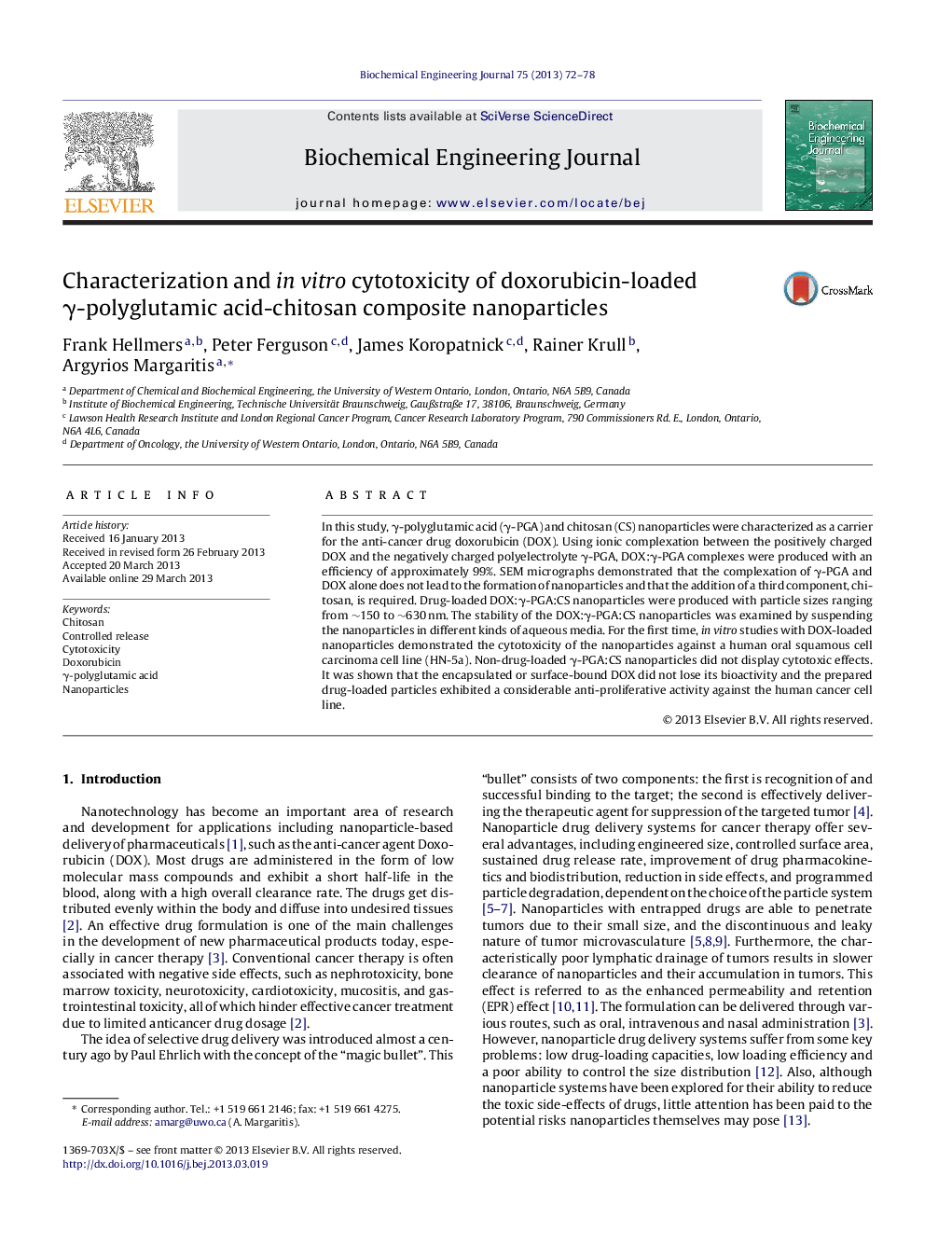| Article ID | Journal | Published Year | Pages | File Type |
|---|---|---|---|---|
| 3309 | Biochemical Engineering Journal | 2013 | 7 Pages |
•Novel composite nanoparticles using doxorubicin, γ-polyglutamic acid and chitosan.•Controlled release studies of doxorubicin from composite nanoparticles.•Cytotoxicity of doxorubicin loaded nanoparticles on squamous cancer cells.
In this study, γ-polyglutamic acid (γ-PGA) and chitosan (CS) nanoparticles were characterized as a carrier for the anti-cancer drug doxorubicin (DOX). Using ionic complexation between the positively charged DOX and the negatively charged polyelectrolyte γ-PGA, DOX:γ-PGA complexes were produced with an efficiency of approximately 99%. SEM micrographs demonstrated that the complexation of γ-PGA and DOX alone does not lead to the formation of nanoparticles and that the addition of a third component, chitosan, is required. Drug-loaded DOX:γ-PGA:CS nanoparticles were produced with particle sizes ranging from ~150 to ~630 nm. The stability of the DOX:γ-PGA:CS nanoparticles was examined by suspending the nanoparticles in different kinds of aqueous media. For the first time, in vitro studies with DOX-loaded nanoparticles demonstrated the cytotoxicity of the nanoparticles against a human oral squamous cell carcinoma cell line (HN-5a). Non-drug-loaded γ-PGA:CS nanoparticles did not display cytotoxic effects. It was shown that the encapsulated or surface-bound DOX did not lose its bioactivity and the prepared drug-loaded particles exhibited a considerable anti-proliferative activity against the human cancer cell line.
